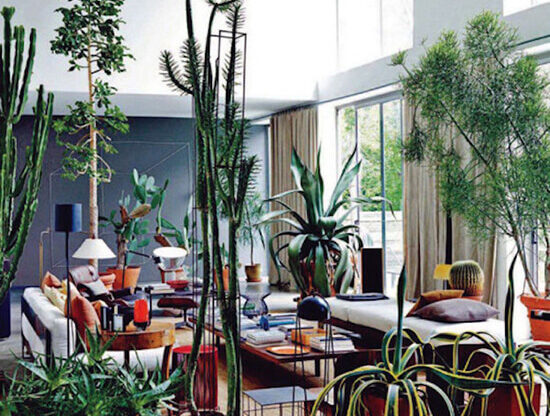Guide to Houseplant Care: Everything You Need to Know to Start an Indoor Jungle

4 Types of Houseplants for Your Indoor Jungle
Choosing the Right Pots for Your Plants
More and more people want a sense of peace in their homes in the midst of the urban concrete jungle, but this is easier said than done. Many use houseplants to bring nature indoors to create an indoor jungle. Houseplants have well-documented benefits on our mental well-being, air quality, and feelings of tranquility. Not to mention, a home overflowing with greenery and nature looks simply stunning.
So, what exactly is an indoor jungle, and how can you transform your home into a green, rejuvenating space?
Browse Our Plants
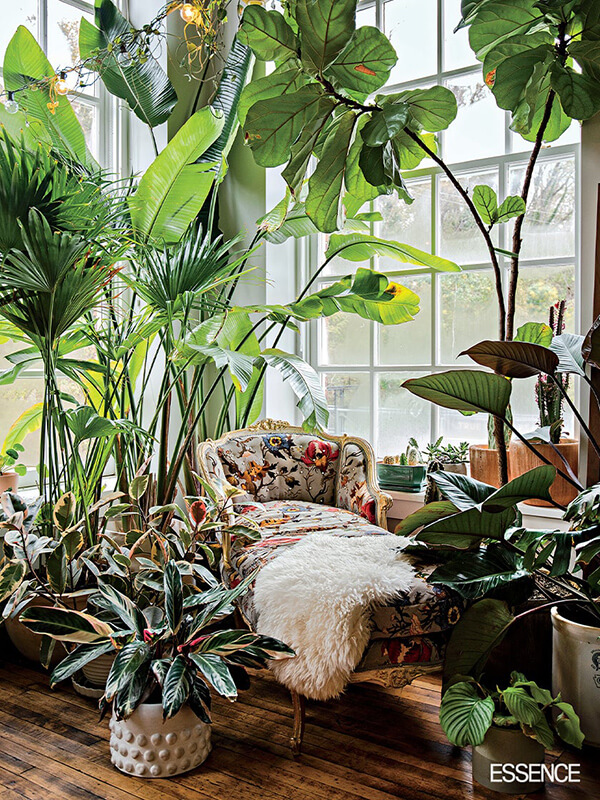
What Is an Indoor Jungle?
An indoor jungle can incorporate just about any plants that take your fancy.
The magic combination is care and curation. Just like a jungle in the wild, try to mix and match a variety of houseplants. The more diverse and vibrant, the better!
Hilton Carter, a Baltimore creative and plants/interiors guru, recently spoke with Pinterest about the transformative impact of his own indoor jungle. He described how it gave him an entirely new perspective on life:
“I was someone who, before bringing plants in, was a very stressed individual. In caring for plants, it helped me understand that you have to put the time in, you have to watch for the smaller changes, the little nuances that develop to understand something a bit better. It was in plant care that I found my source of meditation.”
Of course, before you can enjoy the enriching qualities of indoor plants, you’ve got to pick the right greenery for your space.
4 Types of Houseplants for Your Indoor Jungle
Some common household plants to use in your indoor jungle include:
1. Philodendron
A philodendron is a type of jungle plant that gets its name from the Greek words for “love tree.” It’s a great option for beginners because the plant will give you a visual indicator of its needs. If the leaves are spread apart, it needs more sunlight, and if the leaves are yellow, it’s been overwatered.
If you tend to forget to water your plants, get a philodendron. These plants thrive on little water, needing a small amount once a week or less. Philodendrons also tolerate low-light conditions.
2. Spider Plant
Spider plants are grassy bush plants with thick stems and narrow, grassy leaves. These plants grow quickly and produce smaller baby plants that look like spiders, which is how this plant gets its name.
If your home has consistent temperature and humidity year-round, your spider plant should thrive. Water your plant every week and place it in a well-lit area for the best results.
3. Orchid
An orchid is a perennial that has lovely flowers with a variety of color options, from pure white to vibrant purple. Its leaves are light green, which will get darker in poor lighting conditions.
This plant is easy to take care of. All you have to do is water your orchid once a week and place it in bright, indirect light to keep it looking beautiful. Since orchids get moisture and nutrients from the air, they like high humidity.
4. English Ivy
The English ivy is a climbing vine plant with long tendrils that can grow several feet long, so place it on a shelf or mantel so that its vines can hang down. This hanging ornamental plant will bring a unique look to your indoor garden and works well as a wall cover if you want a topiary look.
You’ll need to regularly prune your English ivy plant to keep it from getting too big. Keep your English ivy plant in a shady area if you want it small or in a sunny spot to encourage growth. It can tolerate different humidity and light levels.
What to Consider When Creating Your Indoor Jungle
Here are three key things to keep in mind when designing your indoor jungle:
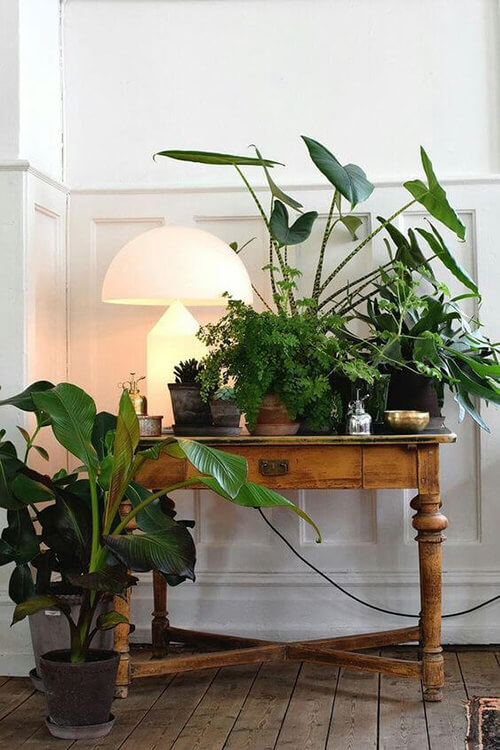
1. Plant Placement
Don’t make the mistake of choosing a plant before you’ve got a place for it!
Different plants thrive in different conditions. There are many variables to consider, from the amount of space and light in your home to temperate, climate, and humidity.
As a rule, don’t squeeze a plant in a small space where there isn’t much airflow. Good circulation is crucial for maintaining a steady temperature. It results in healthier, longer-living plants, lowering the incidence of many diseases.
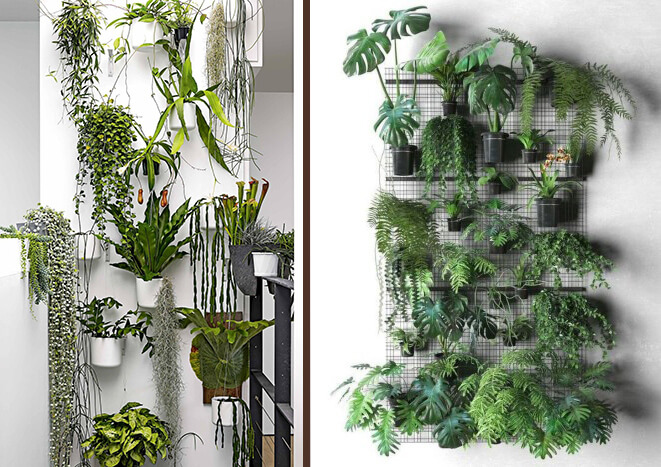
There’s a further bonus. Plants improve the air quality in your home by releasing oxygen and using up carbon dioxide, so placing them in a prominent position is a win-win.

2. Light Levels
Select plants that thrive in the light levels your home enjoys. No one wants to look out at sad, limp houseplants.
Pick your exact spot and do your research before heading to the garden store. Aloes and succulents, for example, need a lot of bright direct sunlight, so they won’t be great in a dark corner.
Assess what direction your windows face. Southwest-facing windows will give high light levels, east- or west-facing windows will supply medium light levels, and north-facing windows provide low light levels.
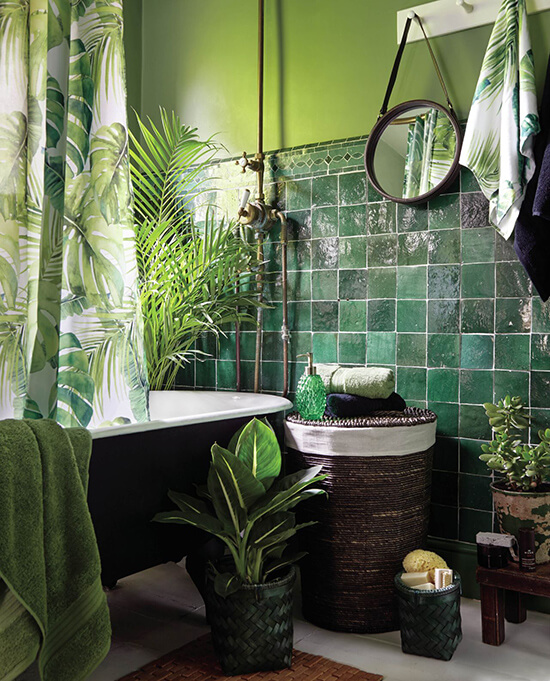
3. Humidity and Temperature
Just as different plants need different light levels, certain plants need more humidity and higher temperatures.
Most homes have low humidity due to heating and air conditioning (A/C) units drying out the air. Don’t put your plants directly next to radiators or A/C units for this reason.
If you’re looking at tropical plants, such as Bird of Paradise or Philodendrons, you’ll probably have to mist them daily.
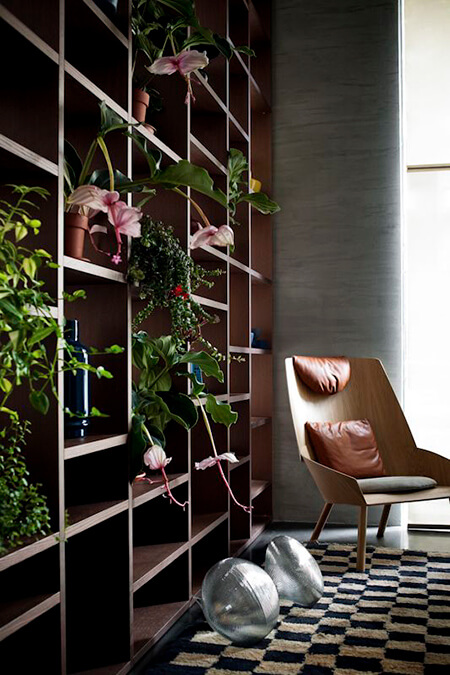
Choosing the Right Rots for Your Plants
You’ve found the ideal plant for that unfilled spot in your home. Great! The next step is picking picture-perfect pots.
When creating an indoor jungle, variety is important, so don’t be scared to play around with your colors, textures, and styles. You can mix stone effect pots with natural wood bowls and wicker baskets.
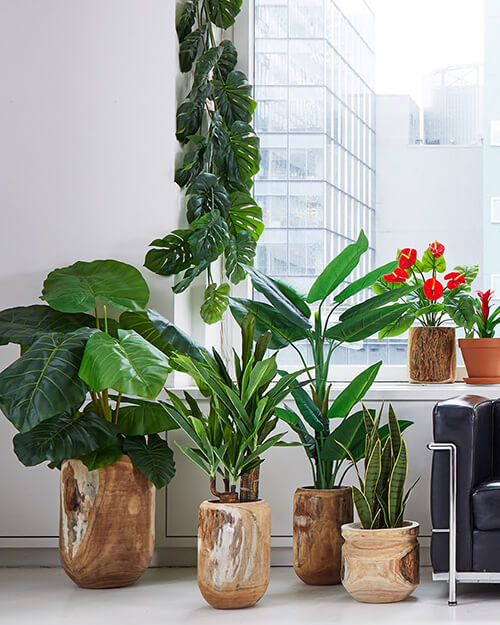
You can add additional interest to your indoor jungle by adding statement pillar candles and metallic lanterns to give a touch of glamour.
Grouping plants and pots of various sizes and looks is key. Just make sure the result matches your home décor and, of course, the size of the plants themselves.
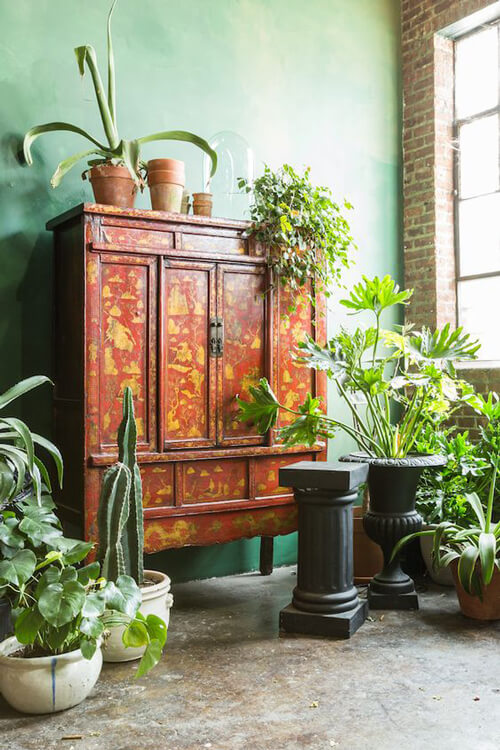
If you’re going for a modern look, for instance, small silver planters combined with raised standing nickel pots could be a great option. For a more traditional atmosphere, you can’t go far wrong with classic garden urns.
Terrariums
For an extra wow factor, have you considered a terrarium?
Terrariums can be made from just about any glass container, from hanging glass jars to display cloches or even intricate honeycomb candleholders.
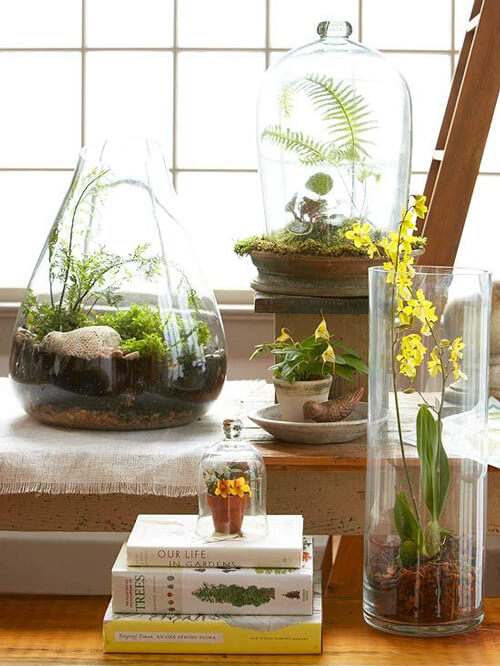
They’re usually planted to look like a miniature garden or woodland encircled in its own little world. Moss, ferns, succulents, and air plants are particularly good choices, growing well with fine soil.
You can decorate your terrarium with decorative sand and polished river stones for a natural effect.
Vibrant celestite stones, which are said to bring mental calm and clarity, or white tumbled marble will give a striking modern look to any planting scheme.
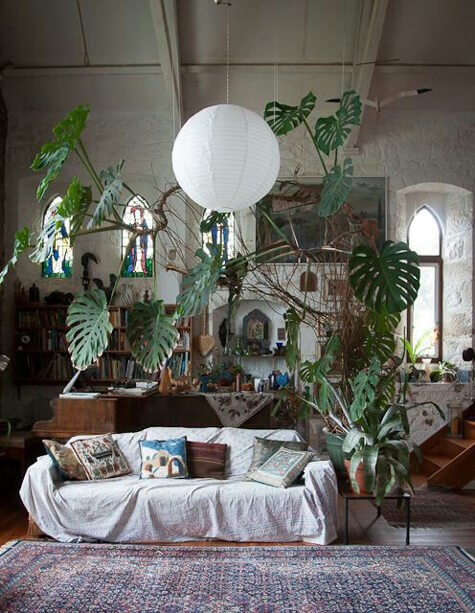
Time to Get Planning
Now that you’ve got all the info, it’s time to get started! Remember that at the heart of all indoor jungles is variety. Colors, materials, and textures, of both pots and plants are all fair game for mixing and matching.
Big dramatic plants, such as tropical fan palms, will pair well with smaller mosses and ferns nestled around their base. Don’t forget that trailing plants such as the humble ivy can also create fabulous effects spilling over shelving.
You can use plants like furniture to break up space. For instance, tree ferns or striking large-leafed plants such as Calathea orbifolia can be placed behind a sofa to define areas.
Remember, your plants will grow, too! When buying plants, go for ones slightly smaller than the size you ultimately want. If you live in a small apartment, you won’t want a fast-growing plant that takes over all the space.
And, for more inspiration and indoor gardening tips, check out Hilton Carter’s Instagram.
If you’re creating an indoor jungle, Jamali Garden has everything you need to transform your space.
Browse our extensive collection of stunning pots and planters, garden décor, and supplies. You’ll soon be enjoying the mindful benefits of planning, growing, and appreciating your very own bit of nature. Good luck and happy gardening.

